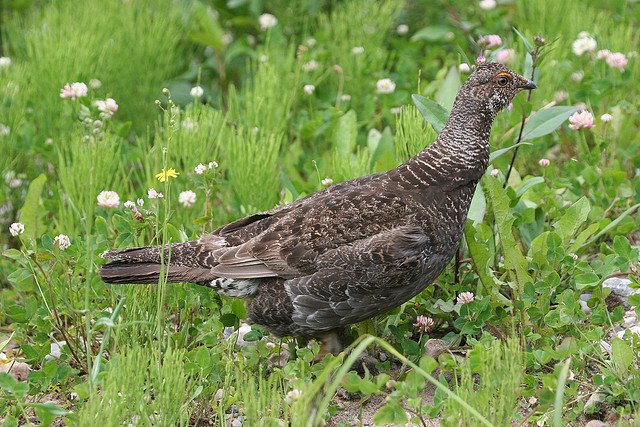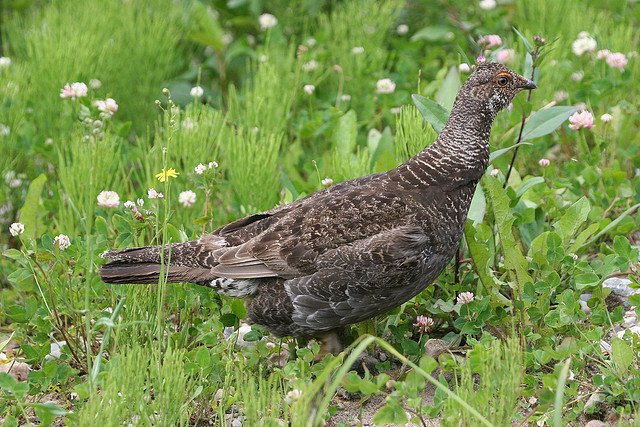
I’ll never forget my first blue grouse, and neither will my black lab. Ironically, It was a first for both of us, and an unexpected one at that. She was just over four months old and I had been working her daily on frozen pigeons since she was old enough to know her name.
She had already retrieved a few quail, and had the makings of a great bird dog. One morning we were driving up a logging road when suddenly I stopped for what looked like a small, confused chicken. I immediately recognized the bird—a blue grouse. I had heard they were dumb but this was ridiculous. I got out of the truck, loaded my gun and unloaded my pup. She heeled at my side, shaking with excitement. Now what?
The darn thing just stood there. I certainly couldn’t just shoot it in the middle of the road. I made a noise, stomped my feet and finally it flew. One shot and it sailed down an embankment with the dog hot on its tail. She came back with a giant, fluffy mouthful of grouse. Best bird I’ve ever tasted. I was hooked.
There are two types of blue grouse. The dusky and the sooty. The sooty are prevalent in the Sierras while the dusky’s inhabit the Rocky Mountains. They are a fun bird to hunt if you know how to find them. They are also one of the best eating birds around. Here are a few tips.
Best areas to hunt
The sooty grouse can often be found where you least expect them. I have jumped lots of these birds simply hiking through the woods. Typically, they prefer higher terrain and clear-cut areas. Often they are found along the edge of wooded areas in the morning and on rocky faces in the afternoon (they like to sun themselves). They are not particularly early-risers so they can be seen throughout the day foraging. You may also find them by walking parallel to creeks. Where there is one, there are generally more close by. Like quail, they hang out in coveys of up to 20 birds (I’ve never seen more than a dozen together). As the weather warms up, sooty grouse move up to higher terrains.
hunting Techniques
I have had the best luck in the morning while walking along the edge of wooded areas where they feed on grasshoppers. Puddles, seeps and small creeks are also worth a try. Like quail, they can be found around berry bushes. Often, you will jump them right off the trail in thick cover so be ready. I have seen the same birds return to the same watering holes. In the afternoon, grouse often prefer sunny south slopes. I have had luck spotting them on bare, rocky outcroppings such as shale. I have also had luck walking through partially shaded areas where old logging debris has accumulated. The last one I shot was under a rotten log and was full of black ants. If you have a good dog that can flush well, you will have a definite advantage. If they fly into a tree, they are masters of camouflage and very hard to spot. Also, be listening for the signature drumming of the blue grouse. It is a strange, deep whooping noise that sounds like nothing else.
Benefits of grouse hunting
Of all the years I have hunted grouse, I have only come across a handful of hunters. Although they are few and far between, they are a great game bird. Be prepared to do a lot of walking and bring plenty of water. The taste of these birds is worth the work. Best of all, enjoy the peace and quiet of the woods. Chances are you will have them all to yourself.








